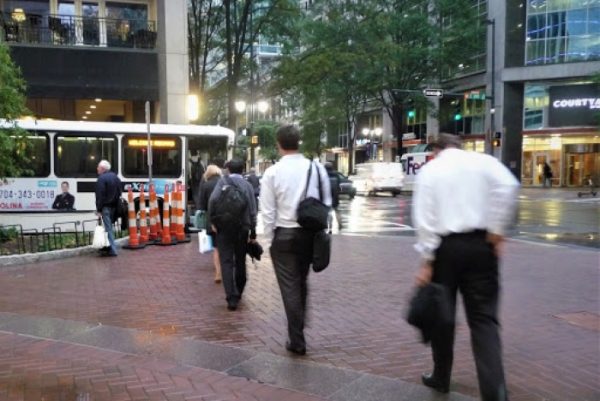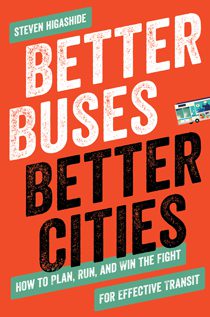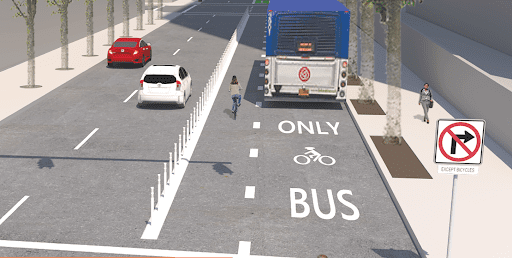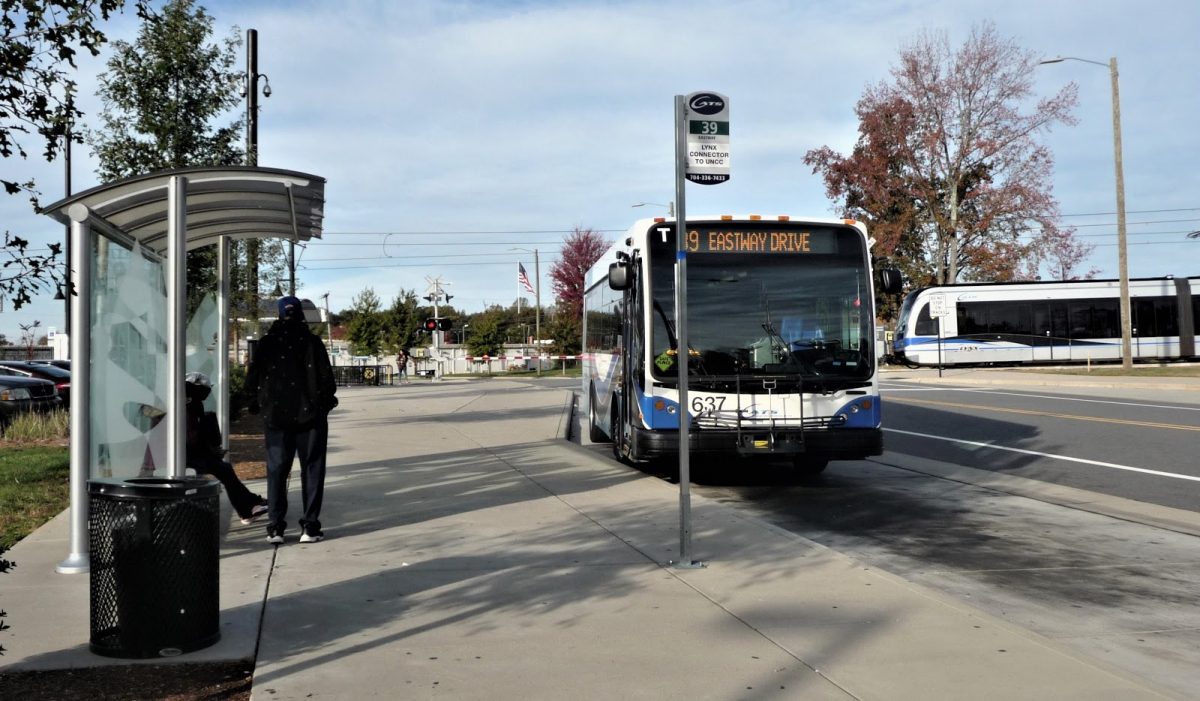Book review: Can we fix our struggling bus systems?

There’s been a lot of discussion lately within transit planning circles about how to attract customers to ailing regional bus networks that connect core cities, nearby towns, and far-flung suburbs — including the Charlotte Area Transit System. A handful of bus systems have actually grown, such as Austin, Houston and especially Seattle. But overall, the prognosis for bus ridership is grim.
Federal government data reveal that from 2008-2018, ridership declined 17 percent nationwide. Combined data for bus and rail reveals a similar trend, with metro areas of Atlanta, Miami, and Los Angeles losing more than 20 percent of their riders.
CATS buses have been hit especially hard, dropping by a third from more than 20 million riders in 2014 to 13.6 million in 2018.
Such discouraging numbers reflect many causes. The most pervasive has been the long-term dispersal of jobs and housing to low-density suburbs and the entrenchment of a car-dependent travel culture. Government policy has played a corrosive role in all this. Highway construction gets roughly four of every five dollars of federal transportation funding, with even worse ratios at many state levels. The dispiriting result is that fewer than 3 percent of workers commute by bus in half of the nation’s 50 largest metropolitan areas. 
Steven Higashide, research director for the New York City-based Transit Center, believes it is possible to reverse this decline. In his new book Better Buses, Better Cities, he argues for service and operational reforms that can be planned and instituted by the bus agencies themselves.These are not sexy or technocratic distractions like hyperloop trains. His suggestions are strategic, pragmatic and incremental, and not all that difficult to identify.
Higashide makes the case buses can not only win back the lost customer base, but to tap into a vast pool of potential new riders. In short, that means implementing a standard of service that is “reasonably fast, affordable, and convenient.” Or to quote Jonathan English in a compelling essay for CityLab, “service drives demand.”
It is pointless to target any level of improvement, however, without first deconstructing the nagging misunderstandings, misconceptions, and in some instances, outright hostility that politicians, transit board members and other decision-makers harbor when dealing with their own bus systems.
Perhaps worst of all is to mischaracterize a transit system as “a two-tiered approach…. with high-end, expensive transit [i.e. rail] built to the suburbs to get people out of their cars and terrible service for everyone else [buses].” Higashide reminds the reader that “commutes are only a small fraction of the trips that people make.” Service that is truly convenient provides easy access to schools, medical appointments, libraries, museums, public parks, entertainment venues and more.
CATS buses carry about 57 percent of the system-wide daily trips, while light rail accounts for about 43 percent of transit trips
What really counts is bus travel that responds to seven basic user criteria:
- Buses go where you need them to go.
- Buses run frequently enough that you don’t have to check a schedule in advance.
- Buses must be reasonably fast.
- Buses are reliable (they always comes on time).
- You can conveniently walk (or bike) from the bus stop to your final destination.
- The bus system is comfortable and safe.
- The service is affordable.
Solutions from the author’s informal toolkit address issues of speed, frequency and reliability, such as:
- Consolidated bus stops: Walking or biking an extra block or two does not necessarily handicap the customers, but it will decrease travel time;
- In-lane dropoff and pickup: Stops do not have to be “at curb.” They can be “in-lane” with the sidewalk extended to meet the bus, granting the bus priority over the car;
- “All-door” boarding: This means using both front and back doors for customer entry. In San Francisco, bus delay time at stops dropped by 40 percent with this feature;
- Exclusive lanes: Creating a bus-only lane all but guarantees faster times. (CATS will soon feature a bus lane in Uptown on East Fourth Street between McDowell and the central bus transfer terminal).

Artist’s rendering of how a bus-only lane might look in Charlotte. Image: Portland Bureau of Transportation.
And what about Charlotte? Better Buses, Better Cities highlights systems where breakthroughs have already occurred, and Charlotte is not one of these. But to its credit, CATS is upgrading along many of the same lines that are referenced in this concise, introductory book.
CATS has begun applying a hybrid-grid model of cross-town and suburb-to-suburb routes, such as a new line to the Concord Mills shopping mall. After the March 2018 opening of the Blue Line light rail to University City, over 20 bus routes were restructured. Additional routes were amended or eliminated after a second set of changes in October 2018.
If CATS’ ongoing planning process (called “Envision My Ride”) is implemented, it will quadruple high-frequency service availability from the current 49,978 residents living within a quarter mile of a bus stop, to 194,045 residents. That translates to 15-minute or better intervals between buses, seven days a week from 6:30 a.m. to 7 p.m., basically the same standard advanced by Higashide and other experts.

#The 39 cross-town bus transfer at the Old Concord Road light rail station. Photo: Martin Zimmerman
Nevertheless, CATS continues to suffer. At the current monthly rate, ridership will drop by another 11.7 percent to about twelve million for the 2019 calendar year. Sadly, its inventory of buses has not increased since 2007, although the metro area has grown dramatically.
This gets back to where Higashide’s thesis runs into hard realities. Although a handful of systems like Houston’s have managed radical changes within existing budget constraints, they may have been the exception rather than the rule. Higashide quotes veteran transportation consultant Jarrett Walker that “compared to agencies in Europe” his U.S. clients “have the poorest transit budgets, requiring the most painful tradeoffs.”
According to chief operating planning officer, Larry Kopf, making Envision My Ride a reality will necessitate a whopping 50 percent increase to CATS’ operating budget.
Better service by buses requires better funding for buses.
Martin Zimmerman is a Charlotte planner, urban journalist and frequent contributor to PlanCharlotte on issues of transportation, smart growth, and low-carbon cities. He directs City Wise Studio USA.